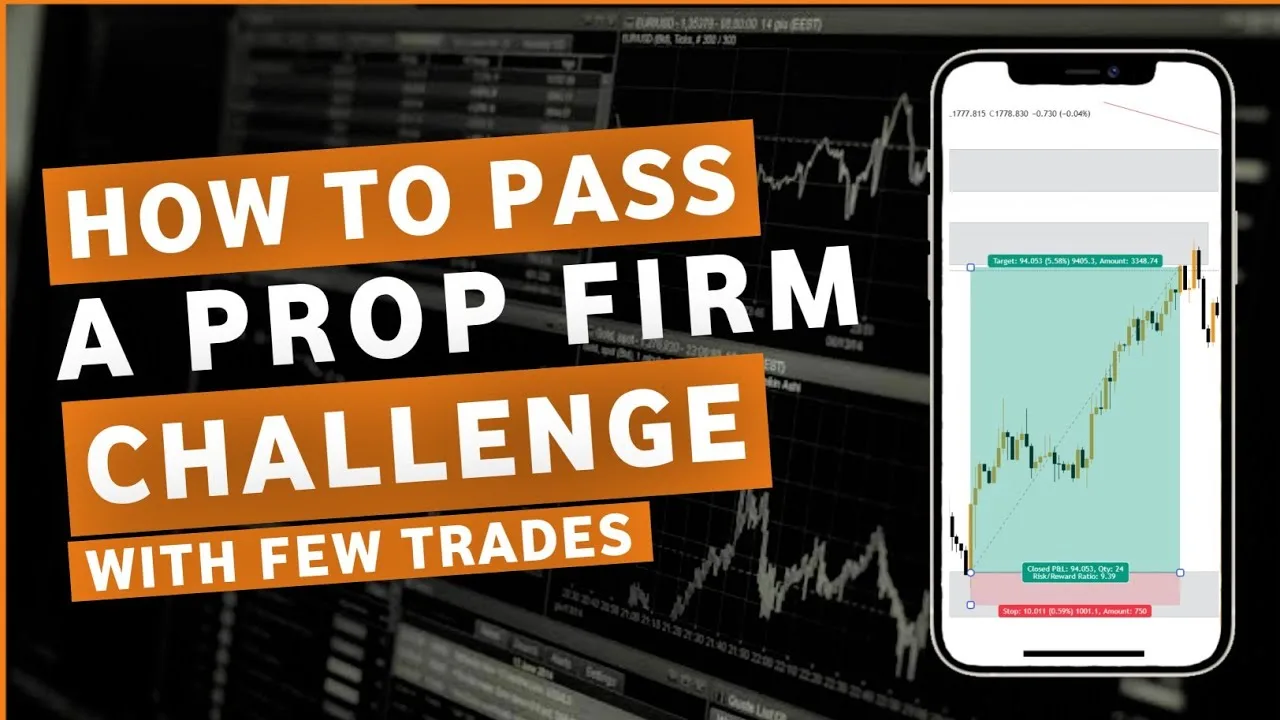Adding to Winners: In the dynamic world of trading Nasdaq, Gold, ES, Crude Oil, and Silver, effective trade management can make or break a trader’s success. One fundamental principle stands out: “Add to your winners and find your edge, and never add to a loser; cut early.”
Understanding Trade Management
Trade management involves strategic decisions made during a trade’s lifecycle to maximize profits and minimize losses. It encompasses entry and exit strategies, risk management, and capital allocation.
Key Concepts and Strategies
Adding to Winners
-
- Definition: Increasing position size as a trade moves in your favor.
- Benefits: Enhancing profitability during strong trends.
- Example: Suppose a trader initiates a position in Nasdaq futures based on a breakout above key resistance levels. As the trade gains momentum and the market continues to rally, the trader decides to add to the position to capitalize on the upward trend. This strategy allows them to maximize their profit potential while managing risk effectively.
- Actionable Tips: Use technical indicators like moving averages or trendlines to identify strong trends. Always assess the risk-to-reward ratio before adding to a winning position.
Understanding Adding to Winners
Adding to winners is a strategic approach where traders incrementally increase their position size as a trade gains momentum and moves in their favor. The rationale behind this strategy is to maximize profitability during strong trends while controlling risk through prudent trade management techniques.
Key Concepts and Benefits
- Benefits of Adding to Winners
- Maximizing Profit Potential: By adding to winners, traders can capitalize on extended market trends, thereby maximizing profit potential from favorable price movements.
- Reducing Average Cost: Incremental additions to winning positions allow traders to improve their average entry price, enhancing overall profitability.
- Enhanced Risk Management: Properly executed, this strategy helps in adjusting stop-loss levels and managing risk relative to increased position size.
- Strategies for Adding to Winners
- Technical Analysis: Utilize technical indicators such as moving averages, trendlines, and momentum oscillators to identify strong trends and potential entry points for additional positions.
- Market Sentiment: Monitor market sentiment and investor psychology to gauge the strength and duration of prevailing trends, supporting decisions to scale into winning trades.
- Pyramiding: Gradually increase position size in predefined increments as the trade progresses favorably, ensuring each addition aligns with the evolving market dynamics.
Practical Tips and Techniques
- Establish Clear Entry and Exit Criteria: Define precise entry signals and criteria for adding to winners based on technical analysis and market conditions.
- Implement Risk Management Measures: Set stop-loss orders and employ trailing stops to protect profits and mitigate potential losses as the trade develops.
- Monitor Trade Progress: Continuously evaluate the performance of added positions and adjust strategies accordingly to optimize profitability.
Real-Life Examples and Case Studies
- Nasdaq Trading Example: Detailed analysis of a live trade where a trader adds to a winning position in Nasdaq futures, utilizing MACD and RSI indicators to confirm bullish momentum and adjust position size accordingly.
- Gold Market Strategy: Practical insights into adding to winners in the Gold market, showcasing how Fibonacci retracement levels and geopolitical developments influence trading decisions and position management.
- ES Futures Case Study: Examination of a successful ES (E-mini S&P 500 futures) trade where pyramiding techniques were employed to capitalize on a sustained uptrend, supported by volume analysis and price action signals.
- Crude Oil Trade Example: Real-world application of adding to winners in Crude Oil trading, emphasizing the role of supply-demand dynamics and geopolitical factors in expanding profitable positions.
- Silver Market Insights: Insights into adding to winners in Silver futures, highlighting breakout strategies and volume analysis techniques to enhance trading profitability during market uptrends.
Finding Your Edge
- Definition: Identifying a unique advantage or strategy that consistently generates profitable trades.
- Tips: Techniques for discovering and refining your trading edge in different markets like Gold and Crude Oil.
- Conduct thorough market research and analysis to identify patterns or anomalies that others may overlook.
- Experiment with various trading strategies and track their performance over time to identify what works best for you.
- Sample: A trader specializing in Crude Oil futures uses a combination of technical analysis (such as Fibonacci retracements and pivot points) and fundamental analysis (monitoring supply-demand dynamics and geopolitical events) to predict price movements accurately. By leveraging this edge, the trader consistently achieves above-average returns in their trades.
Understanding Your Trading Edge
Your trading edge refers to a distinct advantage or strategy that sets you apart from other traders and consistently leads to profitable outcomes. It could be based on technical analysis, fundamental insights, or a specialized approach to risk management that enhances your trading performance.
Key Concepts and Benefits
- Identifying Your Edge
- Market Research and Analysis: Conduct thorough research to identify patterns, anomalies, or inefficiencies in the market that can be exploited for profit.
- Personal Experience and Expertise: Leverage your background, skills, and unique perspective to develop a trading approach that aligns with your strengths and preferences.
- Continuous Learning: Stay updated with market trends, news, and developments to refine your edge and adapt to changing market conditions.
- Benefits of Having a Trading Edge
- Consistent Profitability: A well-defined edge allows you to capitalize on profitable opportunities consistently, leading to sustained financial gains.
- Reduced Emotional Decision-Making: Having a structured approach based on your edge minimizes emotional trading decisions, enhancing discipline and decision-making clarity.
- Competitive Advantage: Your edge positions you competitively in the market, attracting opportunities and potentially outperforming broader market trends.
Strategies for Developing Your Edge
- Technical Analysis Techniques: Utilize indicators, chart patterns, and statistical tools to identify high-probability trade setups and timing entry/exit points.
- Fundamental Analysis Insights: Incorporate economic data, company financials, and industry trends to anticipate market movements and make informed trading decisions.
- Quantitative Analysis: Apply quantitative models and algorithms to analyze historical data and develop trading strategies based on statistical probabilities.
- Risk Management Protocols: Implement robust risk management practices, such as position sizing, stop-loss orders, and diversification, to protect capital and optimize risk-return profiles.
Practical Tips and Techniques
- Focus on Specialization: Narrow your focus to specific markets or asset classes where you can develop deep expertise and a competitive edge.
- Track and Evaluate Performance: Regularly review and analyze your trading results to identify strengths, weaknesses, and areas for improvement.
- Adaptability and Flexibility: Remain adaptable to changing market conditions and be willing to adjust your trading strategies based on new insights and evolving market dynamics.
Real-Life Examples and Case Studies
- Case Study in Crude Oil Trading: Analysis of a trader’s edge in Crude Oil futures, leveraging technical indicators and supply-demand dynamics to consistently profit from market volatility.
- Gold Market Strategy: Insights into a trader’s edge in the Gold market, combining technical analysis with geopolitical developments to anticipate price movements and execute profitable trades.
- Nasdaq Trading Example: Application of a trader’s specialized edge in Nasdaq futures, using algorithmic trading strategies and market sentiment analysis to achieve above-average returns.
- ES Futures Case Study: Examination of a trader’s quantitative edge in ES (E-mini S&P 500 futures), utilizing statistical modeling and data-driven strategies to optimize trading performance.
- Silver Market Insights: Exploration of a trader’s edge in Silver futures, focusing on unique market insights and timing strategies to capitalize on price fluctuations and market trends.
Never Adding to Losers
-
- Definition: Avoiding the temptation to increase position size when a trade moves against you.
- Importance: Protecting capital and minimizing losses to preserve trading account longevity.
- Illustration: Consider a scenario where a trader enters a position in ES (E-mini S&P 500 futures) based on a bullish breakout pattern. However, unexpected market news triggers a sudden downturn, causing the trade to move into negative territory. Instead of adding to the losing position in the hope of a reversal, the trader swiftly cuts their losses by adhering to their predetermined stop-loss level. This disciplined approach prevents further losses and allows the trader to reallocate capital to more promising opportunities.
- Practical Insights: Set clear stop-loss levels and adhere to them rigorously. Review and adjust your trading strategy periodically based on market conditions and performance metrics.
Understanding Never Adding to Losers
Never adding to losers is a fundamental principle in trade management where traders prioritize risk management by swiftly cutting losses and avoiding further investment in trades that move against their initial expectations. This proactive approach helps protect capital and maintain trading discipline, essential for sustained success in volatile markets.
Key Concepts and Benefits
- Importance of Cutting Losses Early
- Preserving Capital: Minimizing losses early prevents significant drawdowns in trading accounts, preserving capital for future opportunities.
- Psychological Discipline: Maintaining emotional control and avoiding impulsive decisions during adverse market conditions.
- Risk Management: Enhancing risk-return profiles by focusing on trades with favorable risk-reward ratios and limiting potential losses.
- Strategies for Cutting Losses Early
- Setting Stop-Loss Orders: Establishing predefined exit points based on technical levels, volatility, or percentage loss to mitigate downside risk.
- Using Trailing Stops: Adjusting stop-loss levels dynamically as a trade moves in favor, locking in profits and minimizing potential losses.
- Adhering to Risk Limits: Implementing position sizing strategies that align with risk tolerance and account size to avoid overexposure to losing positions.
Practical Tips and Techniques
- Define Risk-Reward Ratios: Assess each trade’s potential upside versus downside and only enter positions with favorable risk-reward profiles.
- Monitor Market Conditions: Stay informed about economic indicators, news events, and technical signals that may impact trade outcomes.
- Review and Learn: Analyze losing trades to identify patterns, mistakes, or market factors that led to losses and incorporate lessons into future trading strategies.
Real-Life Examples and Case Studies
- Nasdaq Trading Example: Detailed analysis of a trader’s decision to cut losses early in Nasdaq futures trading, based on technical indicators signaling a trend reversal and adherence to stop-loss levels.
- Gold Market Strategy: Insights into effective risk management in Gold trading, showcasing how a trader exited a losing position promptly based on geopolitical developments impacting market sentiment.
- ES Futures Case Study: Examination of a trader’s disciplined approach in ES (E-mini S&P 500 futures), where adherence to stop-loss orders prevented significant losses during volatile market conditions.
- Crude Oil Trade Example: Practical application of cutting losses early in Crude Oil trading, highlighting the role of supply-demand dynamics and price action signals in risk mitigation.
- Silver Market Insights: Exploration of a trader’s risk management strategy in Silver futures, emphasizing the importance of maintaining discipline and avoiding emotional trading decisions.
Practical Tips for Traders
- Risk Management Strategies: Implementing stop-loss orders, trailing stops, and position sizing techniques tailored to each market (Nasdaq, Gold, ES, Crude Oil, Silver).
- Market Analysis Tools: Utilizing technical indicators, chart patterns, and fundamental analysis to enhance trade decisions.
- Psychological Discipline: Maintaining emotional control and resilience during volatile market conditions.
Live Trade Examples
- Nasdaq: Step-by-step analysis of a live trade where a trader adds to a winning position during an uptrend, supported by technical indicators such as MACD (Moving Average Convergence Divergence) and RSI (Relative Strength Index).
- Gold: Strategies for managing trades in the precious metals market, incorporating real-time market data and entry/exit points based on Fibonacci retracement levels.
- ES (E-mini S&P 500 futures): Case study demonstrating the application of cutting losses early to preserve capital in volatile market environments, utilizing a trailing stop strategy.
- Crude Oil: Practical tips on adjusting position sizes based on market volatility and price action signals, illustrated with recent supply-demand dynamics and geopolitical influences.
- Silver: Examining how a trader’s edge in technical analysis led to successful trades in Silver futures, focusing on breakout patterns and volume analysis.
Conclusion
Mastering trade management involves continuous learning, adaptation to market conditions, and disciplined execution of strategies. By adhering to the principle of adding to winners and cutting losers early while finding your unique edge, traders can enhance their profitability and achieve long-term success across diverse financial markets.
Final Thoughts
Effective trade management is a cornerstone of successful trading in Nasdaq, Gold, ES, Crude Oil, and Silver. By integrating these strategies and insights into your trading approach, you can navigate the complexities of the market with confidence and consistency.




